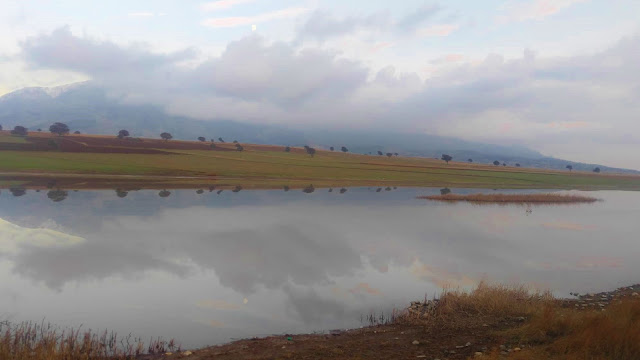The Manikiatis System
Late December 2019
We explored the Manikiatis River in winter...just before the strong winter snows, heavy rains and freshet floods. Rivers in the Med change usually just after Christmas - when an erratic turmoil takes place from flood flows. Here we are just before a major snow storm...and we collected some nice fish data to think over.
The Manikiatis basin is very interesting - it has a lot of perennial water and is a famous endemic hot spot in the Western Aegean Ecoregion - with two range-restricted fishes and certainly many unknowns. It is a precious landscape and riverscape - beautiful centuries old oriental plane riparian forests, amazing karst cliff-scapes - the most impressive inland limestone cliffs on Euboea and some of the most spectacular in southern mainland Greece (i.e. the resemble southern Crete's spectacular cliff-scapes). Also, huge cave systems and amazing sink-holes, big karstic springs. Cultural landscapes with varied vegetation, oak-woodlands, arbutus, heaths and forests of endemic Greek fir. All this in need of protection. Poorly studied, poorly appreciated.
In winter we do not know where the fish are, how they behave, how they survive, what their habitats look like. Do they use intermittent tributaries or intermittent uplands? Where to do their populations stop in the longitudinal gradient? How do fish assemblages change? What natural forces (natural barriers to dispersal etc) affect them? We know very little. Very little is enough to do conservation - some steps needed are obvious, but its complicated. We need to engage with these places and their biodiversity. We need to connect society, heritage and biodiversity. Conservation science is the solution: learn, monitor, promote, start acting with specific conservation actions in defence of biodiversity.
Some thoughts here..
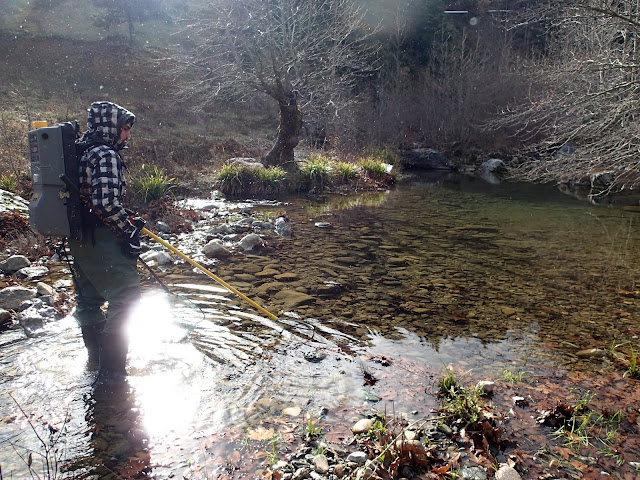 |
| Sampling with electricity in cold conditions, 1 degree Celsius, light snow at 600 m. elevation. |
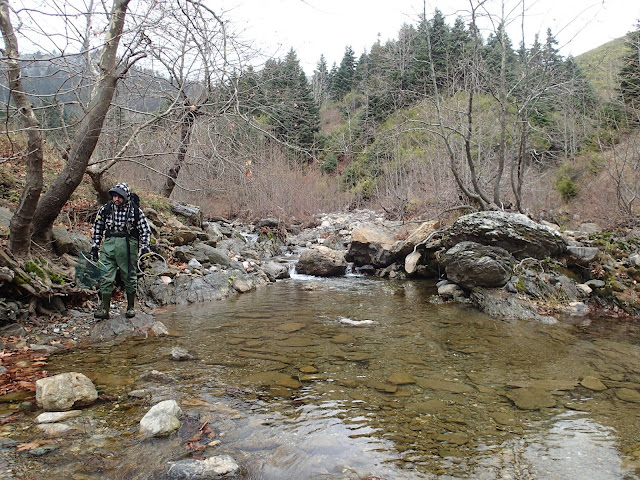 |
| In winter all fish are concentrated in these pools, next to no fish in the riffles-rapids part of the stream. |
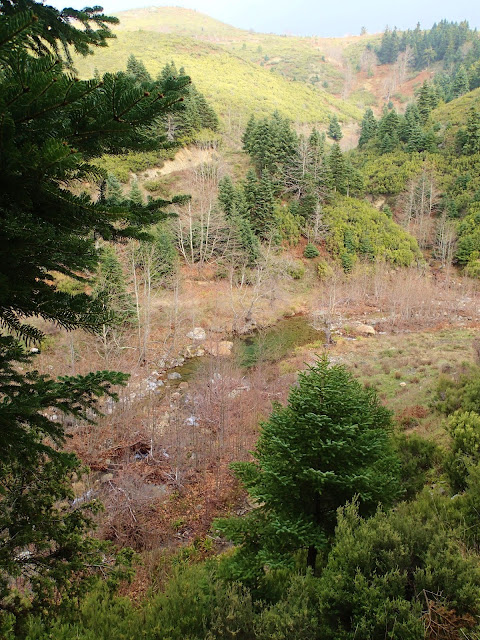 |
| Xerovouni plateau and a the small perennial stream - an off-catchment of the Manikiatis with underground connection to the main stem. Note the Greek Firs (Abies cephallonica), Tree Heather heaths and Oriental plane - even at 700 m + elevation. |
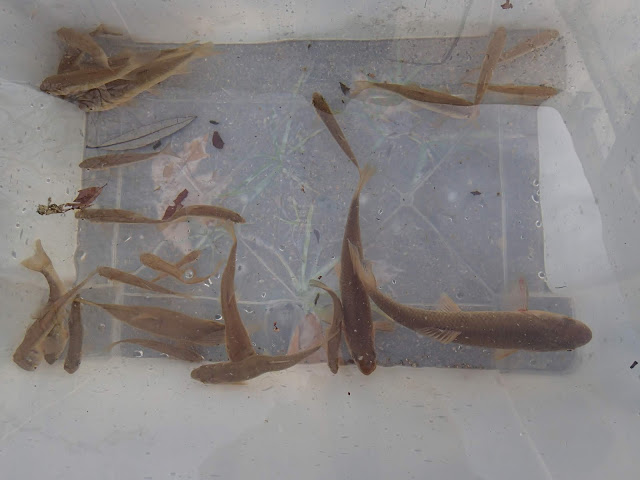 |
| Squalius catch at the Manikiatis stream, new location in the mountains above Manikia and Seta. But still an undescribed species!!! Called "Squalius sp. Evia" for now. |
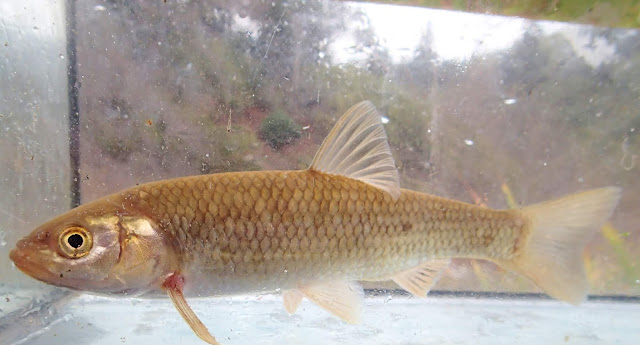 |
| The enigmatic Evia Chub, Squalius sp. Evia: this is from the newly discovered population on Xerovouni mountain. |
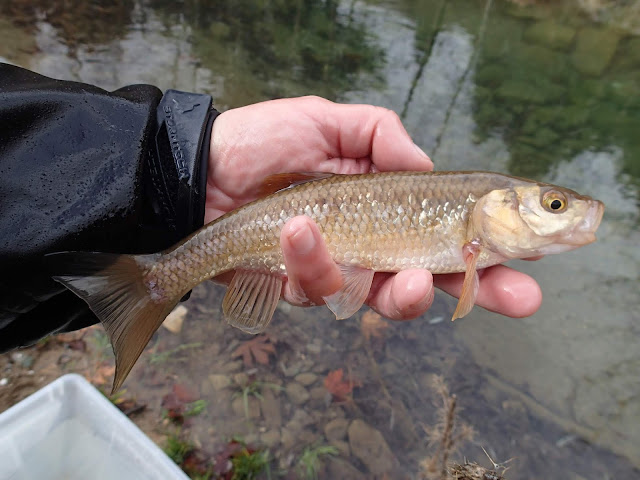 |
| The Evia Chub, Squalius sp. Evia: this is from the newly discovered population on Xerovouni mountain. |
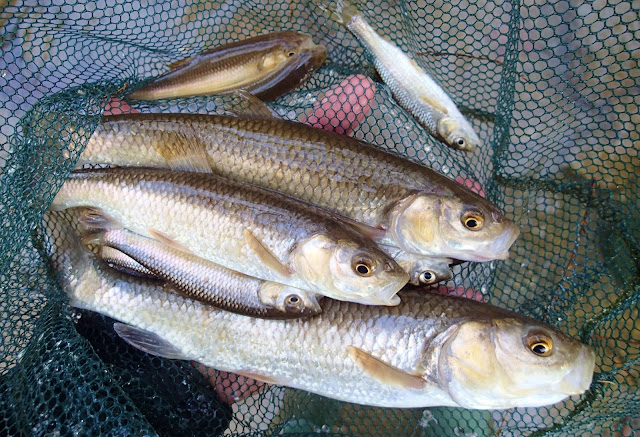 |
| The Evia Chub, Squalius sp. Evia: these fish from the main stem of the Manikiatis river at the outlet of Manikiatis Gorge. They probably move throughout the system - but natural and human-made barriers stop them. In contrast to the endemic Evia Barbel (Barbus euboicus) they are not restricted to certain perennial reaches of the river. |
 |
| The biogeographical enigma of this distinct population of Squalius is distinct and unique in the western Aegean coast (Read: Geiger et al. 2014- snippet of the cluster from their publication above). The Evia Chub, Squalius sp. Evia is not related to the other Squalius of Western Aegean mainland (i.e. Sperchios river near Lamia). The fish at Manikiatis are closely related to fishes from Thrace, Anatolia and Lesbos. Last time the Aegean was "connected" (i.e. river connections) was about 5 million years ago (during the drying out of the Med - in the Messinian Salinity Crisis). Could this population be a relict from that time? It may well be as has been indicated by other fishes of the Western Aegean Ecoregion (e.g. a recent paper on the Alburnoides Sprilins of Anatolia shows that there is a 4,09 mill years distance between A. economoui and A. smyrnae (Read: Bektas, Y., Aksu, I., Kaya, C., Baycelebi, E., Atasaral, S., Ekmekci, F. G., & Turan, D. (2019). Phylogeny and phylogeography of the genus Alburnoides (Teleostei, Cyprinidae) in Turkey based on mitochondrial DNA sequences. Mitochondrial DNA Part A, 30(7), 794-805.) |
 |
| Manikia Village - has given the name "Manikiatis" to the river. Manikiatis river is sometimes mentioned as Manikiotiko or Manikiatiko. Manikiatis is proper. |
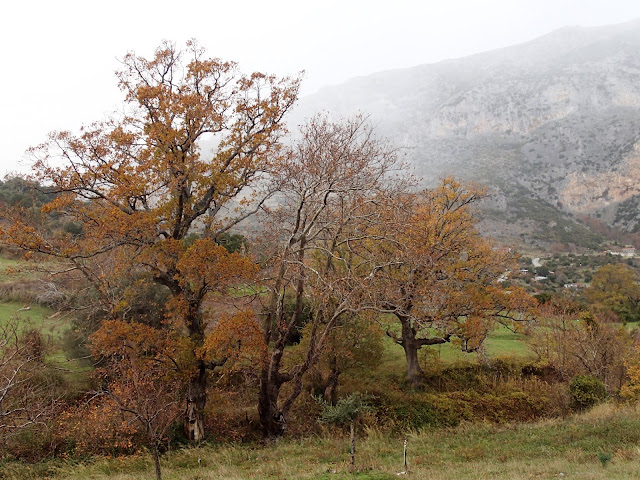 |
An oak and planes on a tiny tributary streamlet, near Manikia.
|
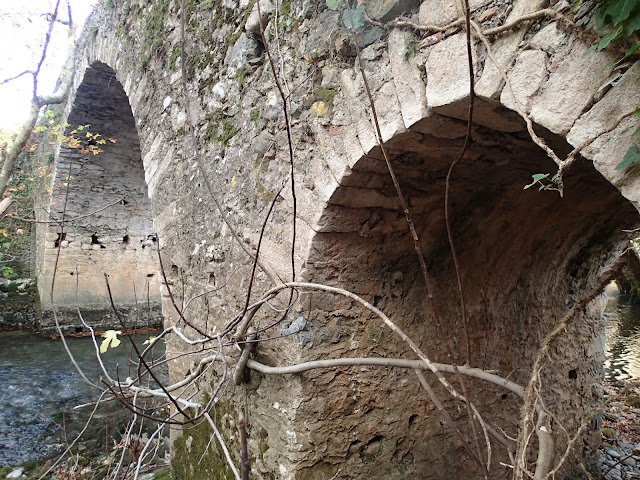 |
| The medieval stone-arched bridge near the village of Vrissi on Kolethra tributary of the Manikiatis river. |
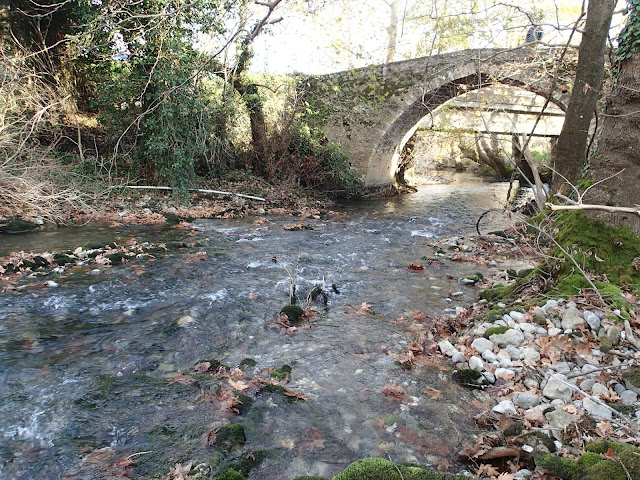 |
| The bridge near the village of Vrissi on Kolethra tributary. |
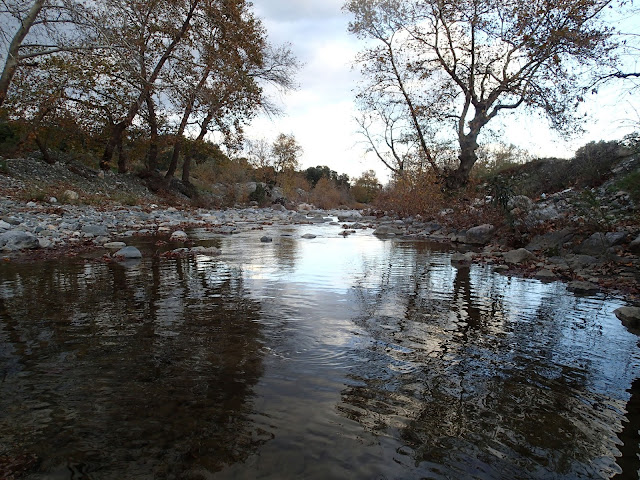 |
| Part of the river flows as an intermittent stream, immediately downstream of the Manikiatis Gorge. |
 |
| Manikiatis Gorge in the distance. Bridge near Vrissi village on main stem. |
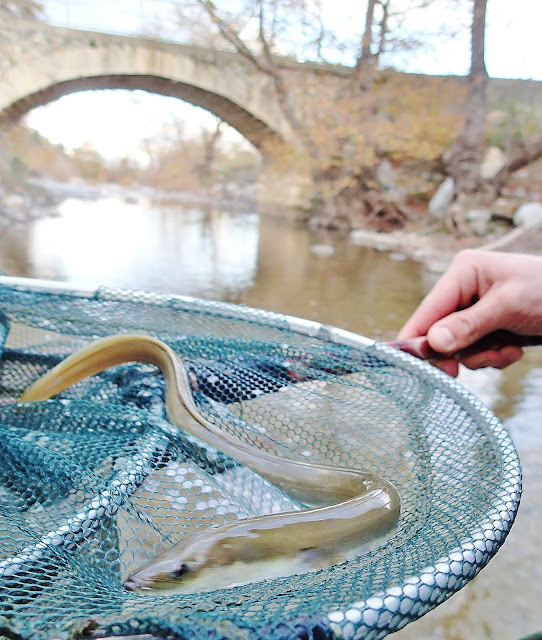 |
| Young eel found in the mid section of the river, before the Manikiatis Gorge. |
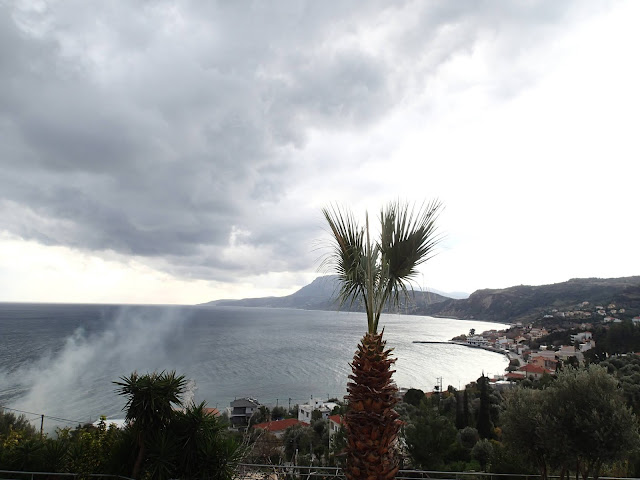 |
| On Central Eubeoa we stayed at the Panorama Hotel at Platana, we thank Katerina and Ilias for their hospitality and the wonderful views of the Aegean Sea. |

